The Miles Davis Quintet “Relaxin’ with the Miles Davis Quintet” Analogue Productions / Prestige
- Performance:

- Sound:

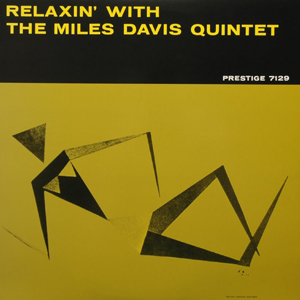
I thought it might be fun to do things a little differently this month. Mother, as they say, is the necessity of invention. There’s not much happening in the World of Rock that interests me presently so I decided to take a look at some Jazz titles that have been reissued by separate, reputable companies. Those are easy to find. Analogue Productions, for instance, is putting out Prestige titles in mono on 200-gram platters pressed at Quality Record Pressings. You don’t have to twist my arm. I grabbed Relaxin’ With The Miles Davis Quintet. This is not without precedent. I have an earlier version of Cookin’ by the same outfit from the same company except on 180-gram vinyl which was pressed elsewhere. If you’re in the market for classic Jazz titles in a high-quality analog format, this is your era. It’s great to be alive.
And this recording is most assuredly alive. Living and life affirming. “If I Were A Bell” starts things off on a dry note. Literally. Miles plays with a mute throughout this recording leaving little room for the reverb that our ears have been so deftly trained to expect. But humanity will eventually encroach upon everything available, and things are no different in the world of Relaxin’. Coltrane ain’t muted, nor are the drums. And that lets us really settle in and do some comparison shopping. The cymbals and ‘Trane’s horn leave that little sonic wisp of a memory that reverb provides. That memory takes a second to decay and this version of Relaxin’ carries enough information and detail to make that second count. A lesser pressing might obscure that info, but I can’t imagine that much of anything is being obscured here. I was equally as effusive in my praise for Analogue Productions’ take on Sonny Rollins’ Saxophone Colossus, and I stand by all previous statements. My limited knowledge of the genre finds me most drawn to Blue Note titles, and my stubbornness and semi-compulsive thought patterns have caused me to believe, somehow, that Blue Note’s greatness precludes the greatness of other labels. Flawed logic, I know. I once was blind, but now I hear.
Relaxin’ was recorded in just two days which is amazing. More amazing than that is the fact that those same two days also produced the Quintet’s Cookin’, Steamin’, and Workin’. Davis got them all down at once as a means of satisfying his contract with Prestige before jumping over to Columbia Records. And Analogue Productions has already released Cookin’ with Steamin’ on the way. That’s three of four for those of us keeping score, but those of us with semi-compulsive thought patterns are chagrined at the idea of not having that fourth record in our collection. I can’t imagine a world where this travesty would be allowed to proliferate so I’ll just pretend to rest easily with the knowledge that this wrong will be righted soon. Relaxin’ will certainly help to take the edge off in the meantime. The performances are as exceptional as you’d expect given the talent involved, and the sonics on this version are equally as exciting. My earlier take on Cookin’ is a little hotter and equally as detailed so I won’t feel like I need to rush out to replace it with a record that’s 20 grams heavier. But, if you missed that one, I wouldn’t let this new series pass you by. Live a little. Hell, live a lot. It’s a New Year!
(This record was purchased at MusicDirect.com.)
The Jazz Messengers “Hard Bop” Impex Records / Columbia
- Performance:

- Sound:

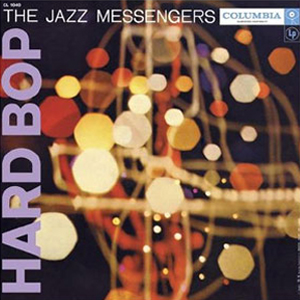
Moving from one quintet to the next… Let’s take a look at Hard Bop by Art Blakey’s Jazz Messengers from the mid-50’s. The players have different names, but they’re responsible for managing the same instruments. Basically. On Hard Bop, Jackie McLean plays an alto sax as opposed to Coltrane’s tenor. Still, having two quintets recording roughly the same type of music at almost exactly the same time should make for an adequate comparison of what the folks at Analogue Productions are doing versus what’s going on at Impex Records. Maybe.
There’s one thing that I didn’t take into account when I made up this genius plan: the drumming of Art Blakey. He’s heavy on the cymbals, at least on Hard Bop. This leaves a lot less space between notes, and makes for more of an action packed listen. And a tougher comparison. Both records are considered part of the Hard Bop style within the Jazz canon, but the styles are as different as Prince’s and Michael’s. It reminds me of my only foray into Los Angeles. I could never figure out if I was actually in L.A. or not. “Are we in L.A. now? How about now?” At some point, I found myself staggering around the Sunset Strip (unwittingly retracing John Belushi’s steps on his life’s last night) so I knew I had made it then. But L.A. was just too damn big. Cities within a city and maybe the same can be said of Hard Bop. Regardless, the Blakey record’s energy is so much more frenetic than what’s found on Relaxin’ that comparison is difficult. I will say this: the Davis record is immediate and raw while it feels like there’s some distance between the listener and the Messengers. I don’t think that’s a function of the Impex pressing or mastering. I suspect it’s simpler than that. It sounds to me like the mics were placed further from the players during the Hard Bop sessions which give the recording a bit more “air.” If this is true, I suspect that the arrangement was born of necessity because these guys are really going for it. The high energy performance might have required the additional space as the horns often play their lines in tandem whereas the players on Relaxin’ remain mostly distinct. The extra air and the extra cymbal work on Hard Bop create an effect that’s not unlike static. Which doesn’t paint the prettiest picture of an audiophile Jazz release, but it’s the best I’ve got. I can assure you that listening to the Messengers record is not unpleasant. Quite the contrary, it’s a wild, intoxicating ride. It’s like caffeine. You’ll want to avoid listening within six hours of bedtime.
I’ve been involved in theatrical productions that made use of a scrim. This is basically a big, thin screen that was positioned towards the front of the stage, but with still enough room for actors to work in front of it. When the scrim was lit, you could also see the set pieces and the actors behind it through the “mist” that the scrim created. And I feel a little like there’s a scrim between Hard Bop and me. It’s harder to hear those “sonic wisps” that are so readily accessible on the Davis record. I’m not knocking Impex’s work. There’s plenty of separation between instruments, but the players fill up the space between the notes. That’s not something that needs fixing. That’s just Hard Bop. And sometimes that’s just what I need. Just not before bed.
(This record was purchased at MusicDirect.com.)
Count Basie “Live at the Sands (Before Frank)” Mobile Fidelity Sound Lab
- Performance:

- Sound:

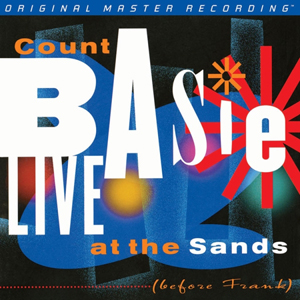
I’ve never been able to figure out what the big deal was about Frank Sinatra. I feel like I just missed it. Maybe the music is too dated, but there’s plenty from Frank’s era to enjoy so that idea doesn’t really hold water. If what Sinatra did was Jazz, then it’s just not my favorite sub-genre. I know this smacks of sacrilege to some, but the whole Swinging’ Vegas vibe with the Rat Pack never really took off for me. I’m not saying those guys were entirely talentless, just that I don’t see what the big deal was. But I recently picked up a two record set from MoFi that documents some of Count Basie’s opening sets for the Rat King at the Sands in 1966, and that’s a different story. I enjoy Big Band Jazz and I’m curious to know what the vibe was at these shows. They took place over the course of about a week according to the clues I’ve uncovered, and Basie’s band backed up Sinatra after warming up the room. Maybe the Sinatra record from this run of shows would be a good place for me to try to get a foothold on his work. Maybe I’ll get to that one day. Until then, I’ll stick with the Count.
I’ve really enjoyed collecting Duke Ellington over the last couple of years, and that has served as my introduction to Big Band Jazz. There’s a lot of high quality Duke reissues to choose from, but I haven’t noticed as much out of the Count. Both are world class pianists, and I’ve gotten a couple of titles that really allow both musicians to shine in smaller combos and more stripped down settings. This is my first exposure to Basie’s full orchestra in an environment where I can really sit back and study what’s happening. Unfortunately, this performance occurred about 20 years past the Orchestra’s prime. It would be like seeing Zeppelin at Knebworth. Seeing Jimmy Page hop around in his button down oxford and khakis is cool, but it ain’t what we think of when we think of Zeppelin. Furthermore, something in this recording seems to have taken the claws off of these tunes. Maybe it’s the noise in the room which is pretty prevalent throughout. You can’t discern entire audience conversations, but you get the feeling that you almost could. What is really cool about this record is that it’s basically a greatest hits collection featuring some of Basie’s best known work. So it serves as a fine introduction to his catalog while perhaps spurring the listener towards finding more definitive or “hotter” performances of these same songs. There’s also a killer version of Don Gibson’s “I Can’t Stop Loving You” for the Country fans amongst us along with a trombone solo during “Makin’ Whoopee!” that’ll make you swear you’re listening to an old Felix the Cat cartoon soundtrack. And that’s fun, right?
Live At The Sands (Before Frank) is not the best sounding record in my collection, but it’s far from an embarrassment. The project was handled by a more than capable company and I’m sure MoFi did the best they could with what they had. If they left a bunch of clinking cocktail glasses in the mix, then I suspect that the sonics would have suffered more for taking the cocktails out. And this is a fun listen; I just don’t get the “hit” from it that I was hoping for. But I’m not giving up on the Count. The truth is out there. I’ll find it in 2014.
(This record was purchased at MusicDirect.com.)
Thelonious Monk “Something In Blue” Pure Pleasure Records / Black Lion
- Performance:

- Sound:

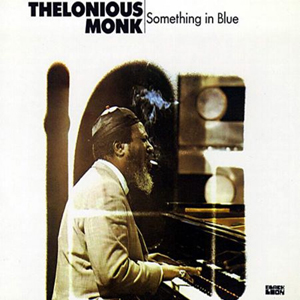
After all of that swingin’ and carryin’ on with Count Basie and the Jazz Messengers, I thought it might be nice to bring things in a little closer to home with some piano music. I chose Thelonious Monk’s Something In Blue (from Pure Pleasure) for that purpose. Perhaps I didn’t think this through well enough because there’s not a whole lot of chilling out involved with Monk’s style of play. He has his quieter moments, but mostly the guy’s the Jazz equivalent of Yosemite Sam. Gun blazing, storm creating Yosemite Monk. Somehow, a name like “Thelonious” rolls off the tongue a little more easily. And Something In Blue flows out of the speakers just as smoothly, when Monk’s cooking or reloading. It all works well, and this record is a keeper in every way.
My other Jazz piano albums are Duke Ellington’s Piano In the Foreground and Nat Cole’s Penthouse Serenade (also by Pure Pleasure). Both are phenomenal, and Something In Blue is not out of place in that trio. Riding with Monk might not be as smooth as with Cole or as opulent as it is with the Duke, but it’s loud and it’s fast with beautiful scenery on all sides and with enough power to support an orchestra. But that’s not the road that Monk chose. At least not while recording Something In Blue in London on November 15, 1971. Again, I find myself listening to a master past his prime, but this time the results are a little less stilted. In fact, the results are downright eye opening. I saw a recent interview with Trent Reznor wherein he described processing every sound that he encounters in life according to where it would live on a keyboard. And you can do that because the notes on a piano are arranged in the most logical way available. And Something In Blue is presented to the listener as if he or she were sitting on the piano stool in Monk’s place. The high notes are hard in the right channel with the lows in the left. I’m sure Reznor wouldn’t have a hard time envisioning where these notes live if I get the basic picture. And the whole experience kind of shows up the guitar for the illogical torture device that it is. I should have listened to my mom and gone with the piano. I should have listened to my mom about everything. And my mom will love Something In Blue. It’s the sonic equivalent of a really juicy Blu-ray movie from the Criterion Collection. It gives the listener a peak behind the curtain, basically. It’s like a Jazz piano class on wax. The listener has their work cut out for them, but it all makes sense when Monk points the way. As the title suggests, his work is hugely informed by the Blues. And I hear a lot of Ragtime in there too although I’d feel way out of my depth trying to comment much on that. Half of these songs are solo performances while the others include bass and drums. I prefer the solos. Those are like hanging out behind the curtain, drinking martinis, talking to the Wizard himself.
Pure Pleasure’s site states that they master their records from the “best available sources.” I couldn’t find any info about the source used for Something, but the sound suggests all analog to these ears. It’s a very direct experience with no drinks clinking in the background and minimal cymbals to distract you. I say “do it.”
(This record was purchased at MusicDirect.com.)
John Coltrane “Coltrane” Analogue Productions / Prestige
- Performance:

- Sound:

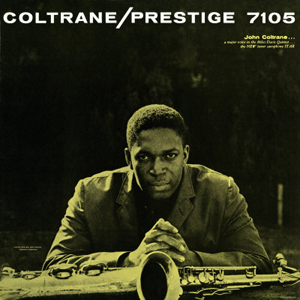
I’d originally intended to compare Jazz albums from five different reputable reissuing companies this month. But I realized that comparisons are futile in many ways once I dug in because there are just so many variables to account for. The ones that come to mind most quickly are the size of the band, style of play, and live versus studio recordings. These are all, admittedly, no brainers (especially the last one), but I guess I went into the project with a little bit too much hubris and thought I could pull it off. It wasn’t a total failure. I got some good records, got inspired to find more, and familiarized myself more thoroughly with some differing Jazz styles. That’s a good month in my book. And I was so blown away by what I heard from Analogue Productions on the Davis record that I decided to go back for more rather than scouring around to find another record for making comparisons that weren’t really happening anyway. I wound up with Coltrane which was the saxophonist’s first title as a solo artist. The music can be a little uneven in places, sometimes within the space of one song, but the recording is every bit as compelling as what I heard on Relaxin’. I’m hooked.
“Bakai” starts Coltrane off, and “Bakai” starts itself off with a chaotic melody suggesting struggle before resolving itself into a number that wouldn’t have sounded so out of place within the confines of Davis’ quintet. As sax man in that quintet, Coltrane almost certainly was expected to play within the framework that Davis constructed. That’s why Davis’name was attached to the group, right? But as a solo artist, Coltrane could cut those ropes from around his wrists and let notes fly from his fingers in ways that would become legendary and influence generations of players. That was the feeling that I got listening to “Bakai,” at least. That zany intro signified an arrival and a departure to me at the same time. Coltrane’s arrival as his own man with all of the sonic challenges that would present, and Coltrane’s departure from Davis’ shadow. I might be romanticizing. I certainly am not basing this on anything I’ve read or learned. But Coltrane really does encapsulate the entire myth of John Coltrane as I perceive it. And all of the wonderful things that I found in the Relaxin’ recording are on full display here too. The living quality of the instruments, the sonic staging and spacing, the clarity and quiet. I have a whole new Jazz catalog to explore with more on the way. Music Matters is releasing some really great titles too, and it’s been a while since we’ve looked at any of those. It’s a beautiful world we live in if you know where to look. I feel like I’m finding my way…
All of the companies that we’ve looked at this month are responsible for some really special releases. MoFi will always be a standby for me, and the folks at Analogue Productions are right on point as well. MoFi seems to have more of a “signature” on their work whereas Pure Pleasure/Speakers Corner seems to try harder to serve as a conduit for the original recordings’ textures. Impex might have gotten a bum rap this month because I have one of their Ellington records that is amongst the best in my collection. Overall, these companies all produce quiet, detailed records that Jazz fans will be well served to collect while they can. That’s my intention. It’s nice to have a plan for the New Year.
(This record was purchased at MusicDirect.com.)


